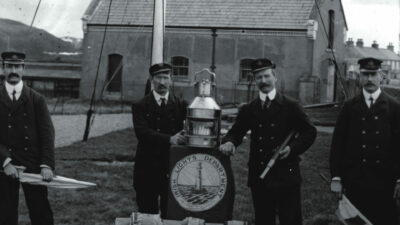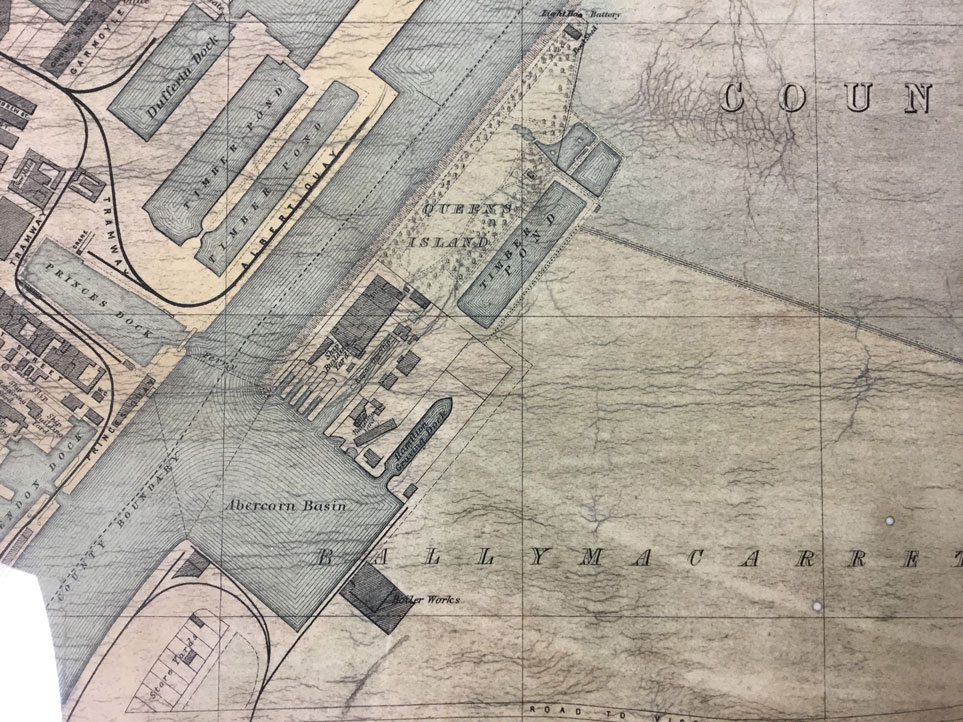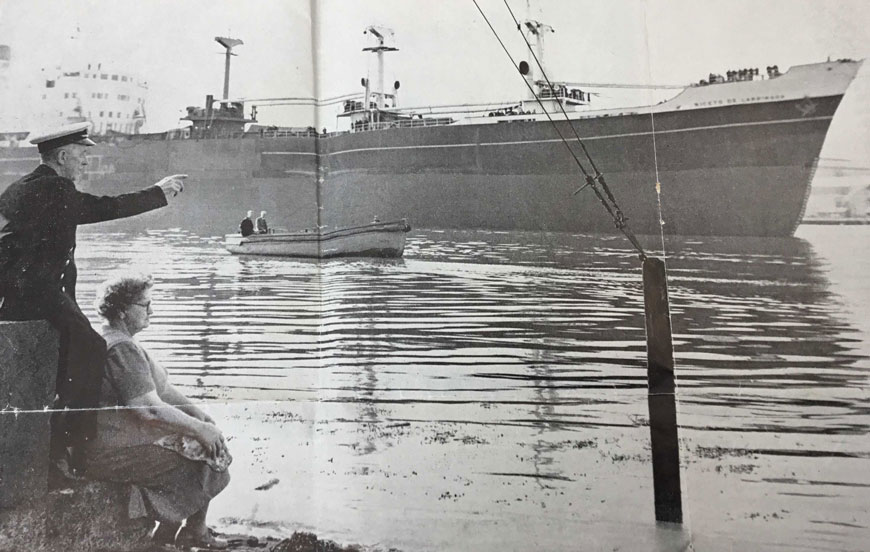Stories and Memories
Maritime Belfast have been working with the former lighthouse keepers from across Ireland who cared for the Great Light, and the story of the optic could not have been told without their personal accounts. We are also discovering new stories about the importance of lighthouses to Belfast Harbour and the shipyards on both sides of the river.

The role of a Lighthouse Keeper
For decades, lighthouses would have needed keepers to keep the light lit, the lens mechanisms rotating, and keeping watch for bad weather, storms and fog so they could warn approaching ships. Their range of duties included cleaning the lenses and making sure there was enough fuel to power the light. We gathered some memories from former lighthouse keepers when they had a reunion event in Belfast in 2017.
Patrick Power
Supernumerary Assistant KeeperRichard Kelly
AK 672
Shipyard Lighthouses
As the Port of Belfast became busier over the centuries, the Harbour needed numerous navigational lights to guide ships in and out, including lighthouses located across Queens Island (now Titanic Quarter). On the spot where the Great Light now sits there was once a lighthouse and battery, as the map from 1860 shows.
In the 1840s a lighthouse was constructed on the Holywood Bank of the Harbour, using a new engineering technique of screw piling, developed by a Belfast man Alexander Mitchell. Despite having lost his sight at the age of twenty-two Mitchell patented a wrought and cast-iron screw pile technique that allowed lighthouses to be constructed on sandbanks and shoals. The Holywood Bank lighthouse served Belfast Harbour until 1891 when it was demolished to make way for the extension of the Victoria Chanel. Lighthouses using Mitchell’s technique were constructed across England and Ireland, including one erected in Dundalk Bay in 1848, which is still in use and maintained by the Commissioners of Irish Lights today.
East Twin Light
In later years there were navigational lights all across the Harbour, including the East Twin Light, a manned lighthouse, which was located further down Queens Island. This light was looked after by a keeper, his wife and family for forty four years until it was replaced by the new dry dock in the shipyard in the 1960s. The area is still known locally as McKibbin’s Point after the lighthouse keeper Samuel McKibbin. He raised his family in the house attached to the light, and his wife helped him keep the light burning in all weathers.

Do you have any Tory or Mew Lighthouse stories?
We are learning about the history of the Lighthouse Optic, which was originally on Tory Island in Donegal before moving to Mew Island, so if you have any stories or images to share relating to the Optic, please contact us.

